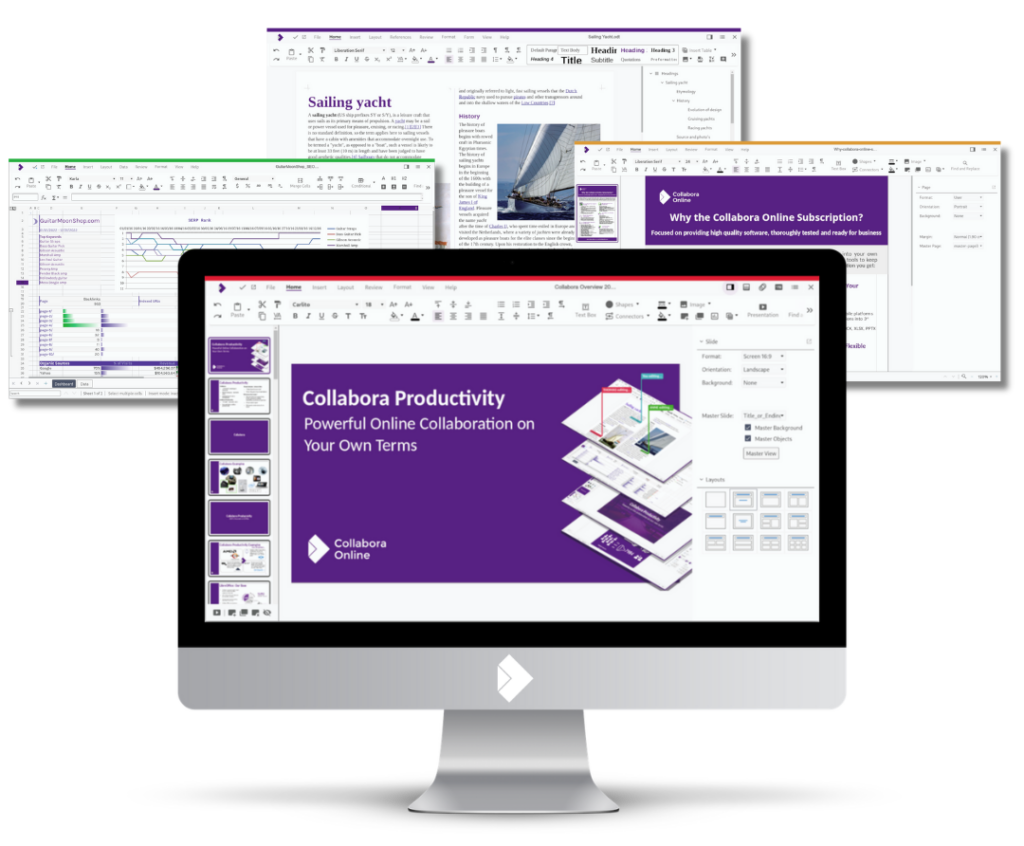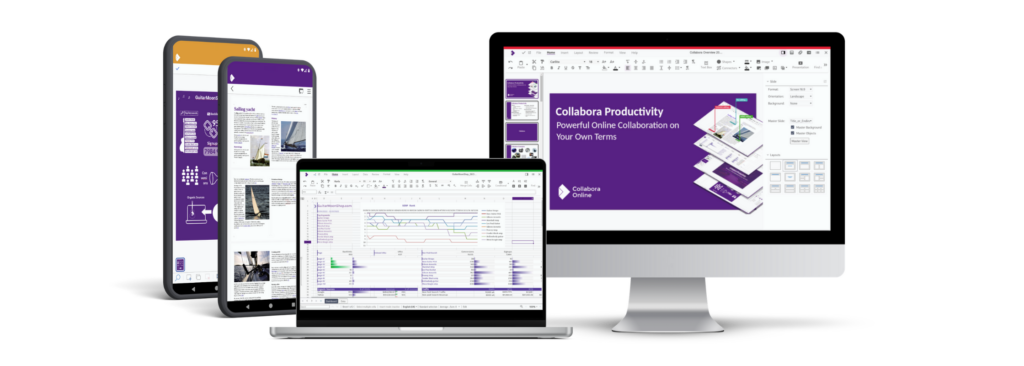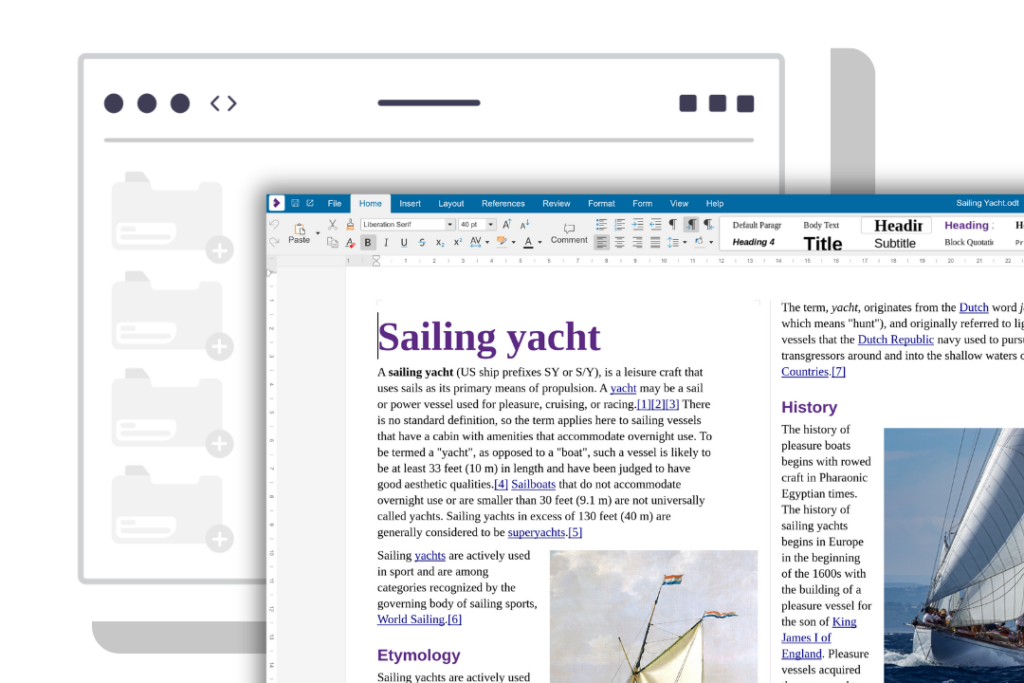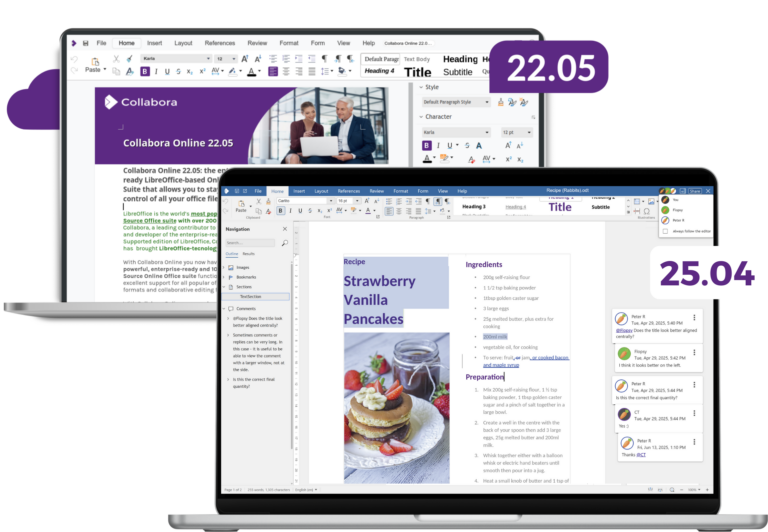
Why Pay for ‘Free’ Software?
Open source is “free”—so why do serious teams pay for it? In this episode, Eloy Crespo breaks down the real value behind paid open-source offerings:
Collabora Online is a powerful online document editing suite. Integrate into your own infrastructure or access via one of our trusted hosting partners.
View and edit your documents as a team – text, spreadsheets, presentations and drawings.

Simple integration with other applications and your own.

Compatible with trillions of documents including Microsoft, open and more.

Online, desktop and mobile apps for productivity wherever you need it.

GDPR compliant with SLA and Support.

With an active global community.





















Collabora Online is an Open Source document editor, designed to be easily integrated into a multitude of solutions. Whether you are sending emails, storing files, empowering education or streamlining business applications, if your product wants documents, you need Collabora Online.
Enterprise file sync and share users can preview, edit, and collaborate on documents directly inside the file-sharing environment.
Adds fully-featured office document editing inside your project-management/email/calendar/productivity platforms.
Learning management systems allow students and teachers to collaborate on assignments, feedback forms, and shared documents in real-time.
Teams can work together on documents within the internal platform—secure, auditable, and self-hosted.
If your app stores or generates documents, Collabora Online can be embedded to let users view/edit them without leaving your app.
Collabora Online integrations combine all the power of our document editor, with another application (or multiple applications). This approach allows end users to enjoy a more coherent working environment, with all their apps working together.
We work with more than 200 partners around the world, providing Collabora Online for millions of users.
✔ Partners handle the complex aspects of integrations, migrations, and hosting.
✔ Choose a partner aligned to your needs.
✔ Combine with many other tools for a complete groupware solution.
Get in touch for a quote, ask a question or sign up to the newsletter so you don’t miss out on all the latest news.

Empower your users with powerful document editing capabilities, easily integrated into your existing platform.
✔ Free to test
✔ Easy to integrate
✔ Customise for your platform















Webinar: How to Choose the Right Collabora Products
23/10/25 15:00 CEST
Webinar: Introduction to Collabora Online
17/07/25 15:00 CEST
Nextcloud Enterprise Day | 22 October 2025 – Copenhagen
Webinar: How to Choose the Right Collabora Products | 23 October 2025 – Online
Nextcloud Enterprise Day | 25 November 2025 – The Hague
Nextcloud Enterprise Day | 9 December 2025 – Paris
Open Source Experience | 10-11 December 2025 – Paris
Univention Summit | 28-29 January 2026 – Bremen

Open source is “free”—so why do serious teams pay for it? In this episode, Eloy Crespo breaks down the real value behind paid open-source offerings:

Welcome to our interview series, where we chat with the passionate people behind the Collabora Online code. Collabora Online is made possible by the worldwide

When we released Collabora Online 22.05, it marked a major step forward – a new design, LanguageTool integration, and a performance boost across the board.

Welcome to our interview series, where we chat with the passionate people behind the Collabora Online code. Collabora Online is made possible by the worldwide